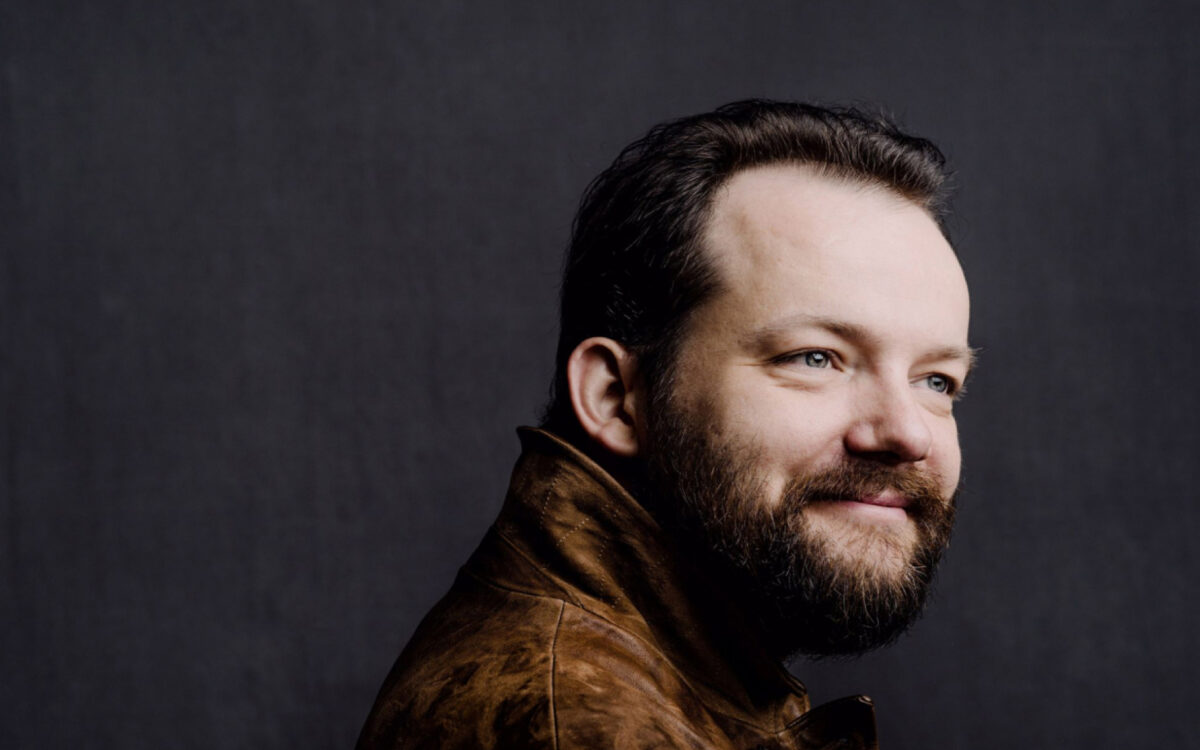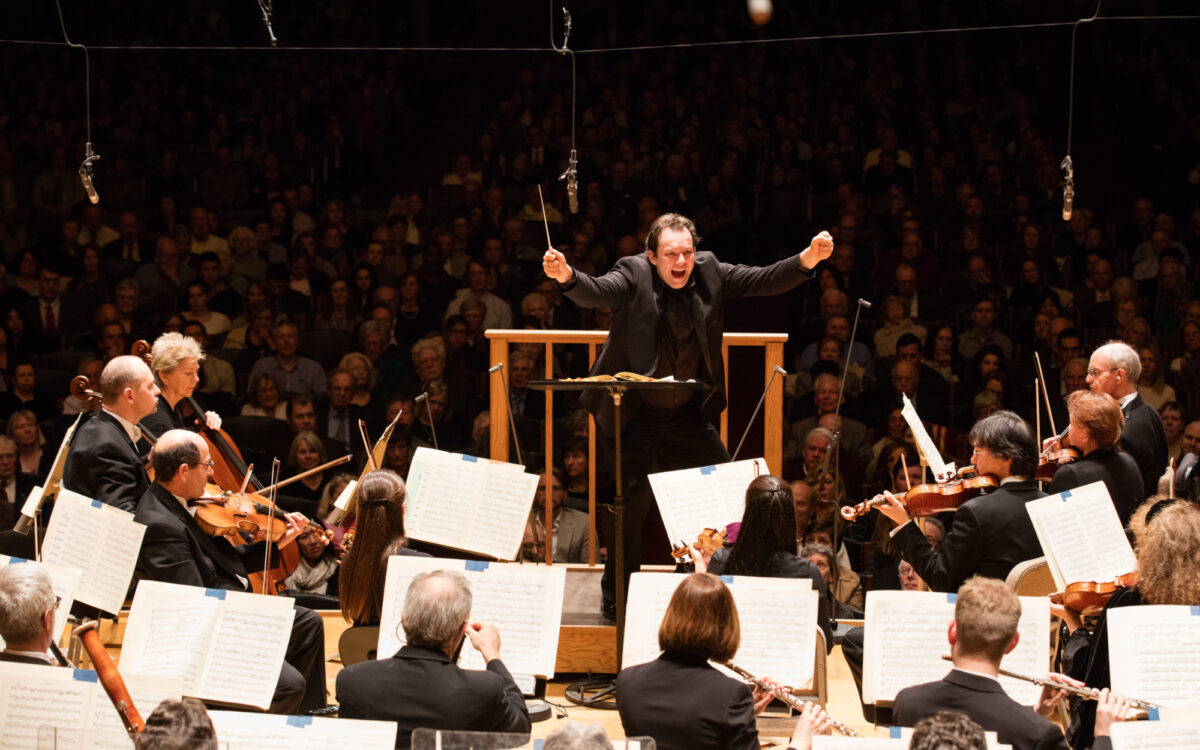Symphonia domestica
Quick Facts
- Composer’s life: Born June 11, 1864, in Munich, Germany; died September 8, 1949, in Garmisch-Partenkirchen, Bavaria, Germany
- Year completed: 1903
- First performance: March 21, 1904, at Carnegie Hall, New York, Richard Strauss conducting
- First BSO performance: February 15, 1907, Karl Muck conducting
- Approximate duration: 45 minutes
The score of Symphonia domestica calls for 3 flutes and piccolo, 2 oboes, oboe d’amore, English horn, clarinets in D and in A, and 2 in B-flat, bass clarinet, 4 bassoons and contrabassoon, optional soprano, alto, baritone, and bass saxophones (omitted here), 8 horns, 4 trumpets, 3 trombones, bass tuba, timpani, bass drum, glockenspiel, triangle, cymbals (clash and suspended), tambourine, 2 harps, and strings.
If Strauss’ efforts at autobiography were disguised up to this time, they became open with Symphonia domestica in 1904, when he had already left his hated Munich for Berlin. Here, in the bustling capital of the young German Empire, he found a conducive atmosphere in which to compose. He had also become an international hit and made his first London tour in 1902, when he took a little vacation on the Isle of Wight. There, he came up with a “Family Scherzo, with Double Fugue, on 3 Themes.” Strauss called it “My Home: A Symphonic Self- and Family Portrait” and created a little description in verse:
My wife, my child, my music
Nature and sun, they are my joy
A little calm and much humor
There even the devil can teach me nothing!
F major 1st theme: Papa returns from trip, tired
B major 2nd theme: Mama
D major 3rd theme: Bubi, a mixture, however a greater similarity to Papa
The three take a walk outdoors. Evening time, cozy family table
Mama brings Bubi to bed. Papa works. Papa and Mama seul: scène d’amour
Morning: Bubi cries, joyful awakening
And then a little quarreling and arguing (Mama begins, but father ends it)
Reconciliation and cheerful ending
The final score follows this scenario remarkably closely.
Strauss always referred to this work as a symphony, never a tone poem, and the four movements correspond to the traditional symphonic movements: Introduction (presentation of the major characters and their themes), Scherzando (the child at play, parents’ happiness), Cradle Song and Adagio (child is put to bed and nocturnal love scene), and Finale: Double Fugue (a new day begins with arguing and reconciliation). Important to note is the dissonant, tritone relationship between Papa (F) and Mama (B) and the child (D) falling in between.
Symphonia domestica, which lasts a good three-quarters of an hour, premiered in Carnegie Hall, with Strauss conducting, on March 21, 1904. It inspired controversy from the outset, even more than Ein Heldenleben: to suggest oneself as a hero had seemed distasteful enough, but now at issue was banal, everyday family life in the form of a lofty German symphony. Strauss insisted that no program notes be published, and he tried to distance himself from the narrative on various occasions. To his friend, Roman Rolland, he disingenuously declared that “the program is nothing but a pretext for the purely musical expression and development of my emotions, and not simply a musical description of concrete, everyday facts.” Yet, to others he happily boasted that he had achieved the highest triumph of musical technique with his ability to musically “differentiate between a knife and a fork.”
His musical sketches and letters to others gainsay his “confession” to Rolland, for Strauss believed he had created a purposeful and modern celebration of the everyday, where the composer tried to reveal the profundity inherent in the mundane. “What could be more serious than married life,” he asked, “Marriage is the most profound event in life, and the spiritual joy of such a union is heightened by the arrival of a child. Married life naturally has its humor, which I also injected into this work in order to enliven it.” Had Strauss been thoroughly honest, he would have added that while on the Isle of Wight, just a day after first sketching his little poem, he received a telegram from his wife, Pauline, asking for an immediate divorce.
Pauline routinely opened his mail and found a letter by one Mieze Mücke who reminded the composer-conductor of the tickets he promised her at the Union Club. Strauss was entirely innocent, the victim of mistaken identity, but it was enough of a crazy confusion that it inspired Strauss to compose later a comic opera domestica, which he would call Intermezzo (1923). Strauss enjoyed composing autobiographically when he was in control, but that was less the case toward the end of his life, when the dark events of World War II and thereafter came crashing into his self-designated “Happy Workshop.”
Bryan Gilliam
Professor Emeritus of Music at Duke University, Bryan Gilliam is a scholar of 19th- and 20th-century German music. He is the author of The life of Richard Strauss in the Cambridge Musical Lives series as well as editor of several volumes of Strauss scholarship. His most recent book is Rounding Wagner’s Mountain: Richard Strauss and Modern German Opera.


